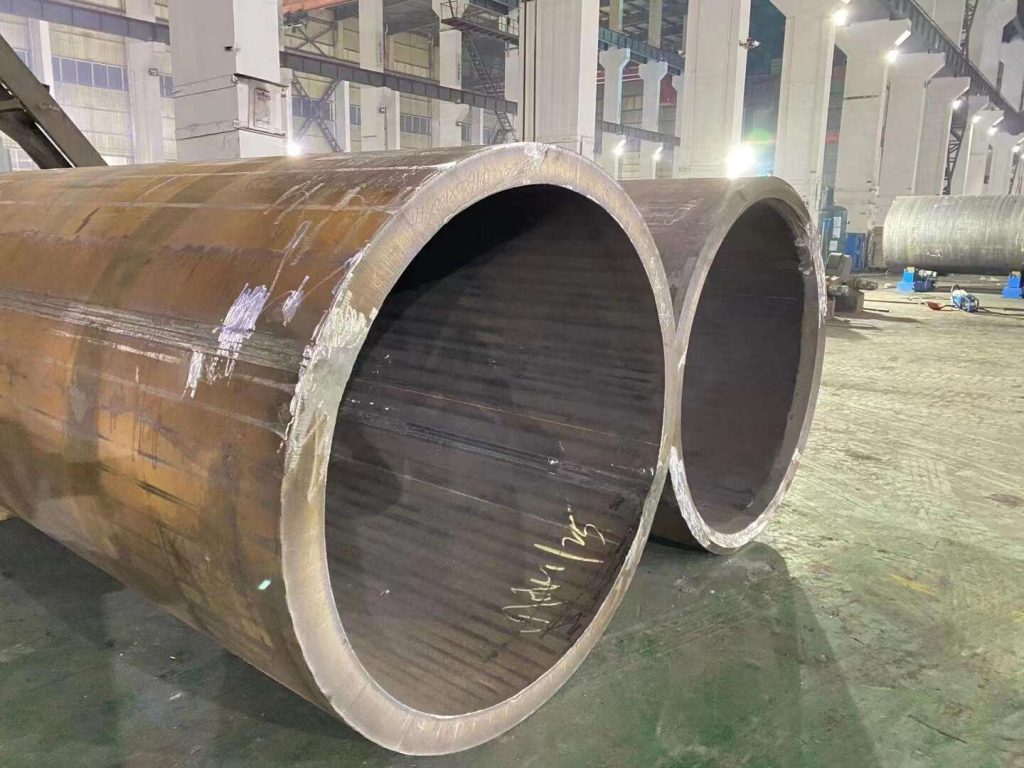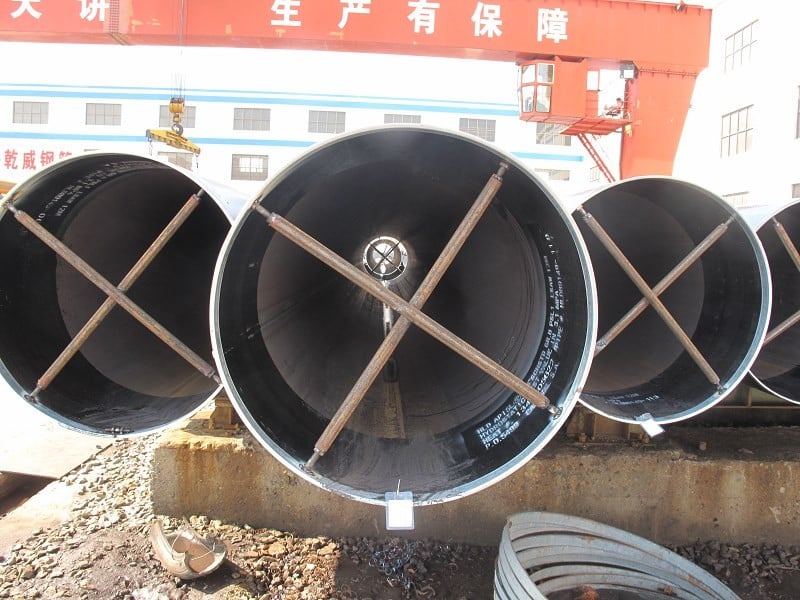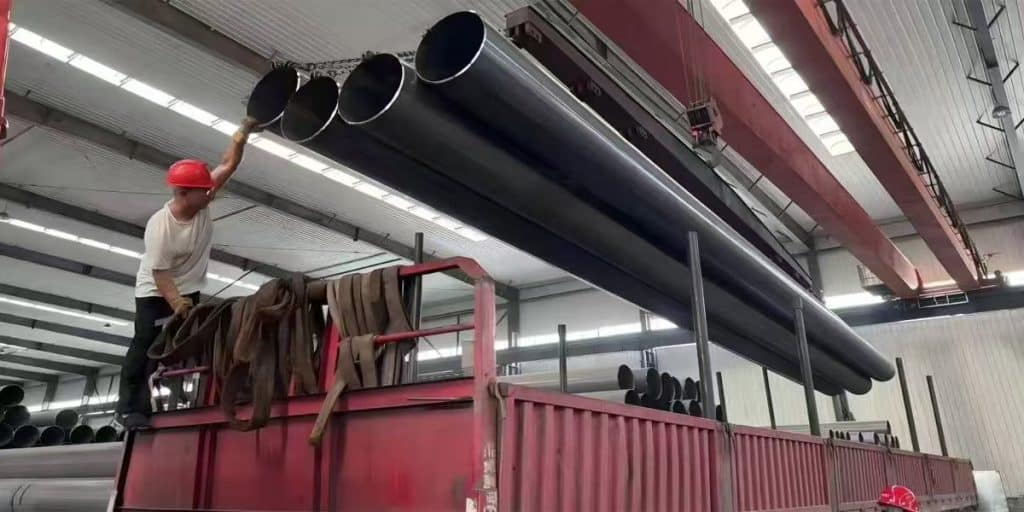- 1. Overview of ASTM A500 Steel Pipes
- 2. Application of ASTM A500 Steel Pipes in the Machinery Manufacturing Industry
- 3. Weldability and Machinability of ASTM A500 Steel Pipes
- 4. Comparison of ASTM A500 Steel Pipes with Other Structural Steel Pipes
- 5. Applications of ASTM A500 Steel Pipe in the Machinery Manufacturing Industry
- 6. How to Choose the Right ASTM A500 Steel Pipe Specification?
- 7. ASTM A500 Steel Pipe in the Machinery Manufacturing Industry: Future Development Trends
In the modern machinery manufacturing industry, the choice of steel pipes plays a crucial role in production efficiency and product quality. As a widely used steel pipe material in mechanical structures, ASTM A500 steel pipe has earned high recognition in the industry for its outstanding performance and reliability. Whether it’s used in machine frameworks, supporting structures, or in environments with high-strength loads, ASTM A500 steel pipes provide stable support and durability!
As Hebei Longma Steel Pipe Manufacturing Co., Ltd., a professional manufacturer deeply engaged in the steel pipe industry, we have accumulated extensive experience in the production and application of ASTM A500 steel pipes, committed to providing high-quality products that meet the stringent requirements of various industries. In the following, we will explore the specific applications of ASTM A500 steel pipes in the machinery manufacturing field and how they are driving industry development and innovation!
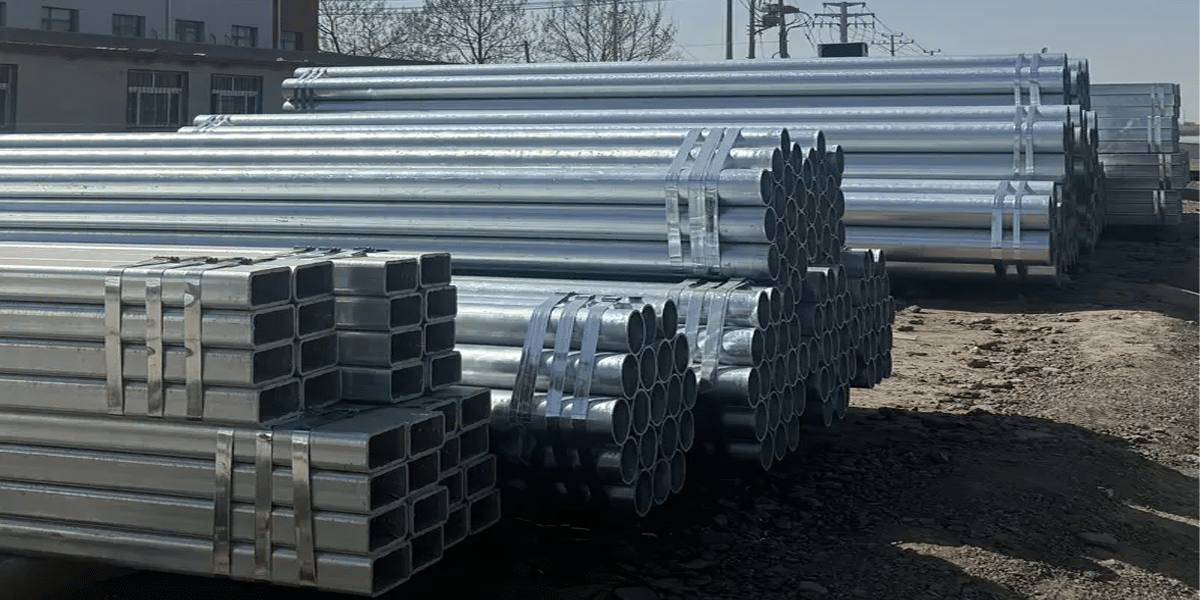
Overview of ASTM A500 Steel Pipes
ASTM A500 is an American standard for structural cold-formed welded or seamless steel pipes, widely used in various machinery, construction, and engineering projects, particularly in applications subject to high-strength loads. This standard, published by ASTM International (formerly known as the American Society for Testing and Materials), outlines the production and performance requirements for steel pipes, ensuring their reliability and safety in different environments and conditions.
ASTM A500 steel pipes are typically made from low-carbon steel or alloy steel, featuring excellent weldability, good corrosion resistance, high strength, and good machinability. The pipes come in three shapes: round, square, and rectangular. The main applications of ASTM A500 steel pipes include structural construction, machinery manufacturing, and transportation pipelines, especially in environments requiring high load-bearing capacity and strength.
Key Features:
High Strength: ASTM A500 steel pipes offer high tensile and yield strength, making them suitable for use in high-load environments.
Excellent Weldability: The cold-formed welding process provides excellent welding properties, allowing them to meet the needs of complex engineering projects.
Corrosion Resistance: The steel pipes have good resistance to corrosion, making them suitable for use in various weather conditions and working environments.
Versatile Sizing: ASTM A500 steel pipes come in a wide range of sizes and wall thicknesses, offering flexibility to meet diverse application requirements.
Applications:
Construction Industry: As a major support material in building structures, ASTM A500 steel pipes are widely used in frameworks, bridges, and other infrastructure projects.
Machinery Manufacturing: Their high strength and durability make them ideal for support frames, structures, and critical components in machinery.
Transportation Industry: Used in pipeline systems and support structures, particularly in the oil, gas, and water treatment sectors.
Industrial Equipment: Suitable for structural components of various industrial equipment, particularly in machinery systems subject to high loads.
Application of ASTM A500 Steel Pipes in the Machinery Manufacturing Industry
1. Machinery Frames and Structural Support: ASTM A500 steel pipes are commonly used in the framework and structural support of machinery. With their high strength, excellent compressive strength, and bending resistance, these steel pipes provide stable support for large equipment. Whether it’s for industrial automation equipment, production line machinery, or heavy machinery, ASTM A500 steel pipes enhance the overall stability of the structure, ensuring safety and reliability in high-load environments.
2. Conveyance Pipelines and Hydraulic Systems: In machinery manufacturing, the conveyance of liquids and gases is essential. ASTM A500 steel pipes, known for their excellent corrosion resistance and high strength, are widely used in hydraulic systems and gas conveyance pipelines. These steel pipes are ideal for transporting oils, hydraulic fluids, and other substances, ensuring safe and efficient fluid transport in heavy-duty machinery systems.
3. Manufacturing of Mechanical Components: In addition to being used for structural support, ASTM A500 steel pipes also serve as raw material for manufacturing mechanical components. For example, certain mechanical parts, such as bearing brackets and support columns, are made from ASTM A500 steel pipes. These components require high compressive and tensile strength, as well as good machinability, all of which ASTM A500 steel pipes provide.
4. Frames and Supports for Industrial Equipment: In industrial equipment frame design, ASTM A500 steel pipes are widely used in the manufacturing of load-bearing and support structures. Whether it’s for cranes, conveyors, or other industrial production equipment, ASTM A500 steel pipes offer strong and stable support, ensuring the stability and durability of equipment over extended periods of operation.
5. Seismic and Impact Resistance Applications: In some machinery manufacturing industries, equipment may be subject to significant shocks and vibrations. Due to its good toughness and resistance to impact, ASTM A500 steel pipe effectively minimizes the effects of vibrations during operation, improving the equipment’s lifespan and safety.
Weldability and Machinability of ASTM A500 Steel Pipes
1. Weldability
The weldability of ASTM A500 steel pipes is one of their standout features, due to their low-alloy composition and uniform material characteristics. These pipes are typically cold-formed and welded using common welding techniques such as MIG welding, TIG welding, and high-frequency electric resistance welding. The advantages of welding ASTM A500 steel pipes are:
Good Weldability: ASTM A500 steel pipes can be welded using standard methods, including manual arc welding, TIG welding, and MIG welding. During welding, the joints exhibit good strength and stability, meeting the requirements for high-strength welded connections in construction and machinery.
Control of Heat-Affected Zone (HAZ): Due to their chemical composition and process control, ASTM A500 steel pipes can effectively control the heat-affected zone (HAZ) during welding. This helps minimize welding stresses and deformation, improving the quality of the weld.
Adaptability to Various Environments: Whether at room temperature or in colder environments, ASTM A500 steel pipes perform well during welding, making them suitable for use in extreme working conditions, including cold climates.
2. Machinability
The machinability of ASTM A500 steel pipes is also excellent, making them suitable for various machining operations, including cutting, bending, drilling, and threading. The machining characteristics include:
Cutting and Shaping: Due to their favorable mechanical properties and relatively low carbon content, ASTM A500 steel pipes can be easily cut using common methods such as flame cutting, plasma cutting, or laser cutting. The cut edges are smooth, making them easier to process further.
Bending and Forming: ASTM A500 steel pipes have good formability during both cold and hot bending. They can be bent around small radii without cracking or damage, which is crucial for applications in building structures and machinery frames.
Drilling and Processing: ASTM A500 steel pipes have excellent drilling and machining characteristics. They can easily undergo operations such as drilling, tapping, and other machining processes, meeting the high precision and detail required in manufacturing.
3. Heat Treatment
In some applications, heat treatment may be required for ASTM A500 steel pipes, such as annealing, normalizing, or quenching, to enhance their mechanical properties. Heat treatment can optimize the pipe’s strength and toughness, improving its performance in high-load or extreme environments.
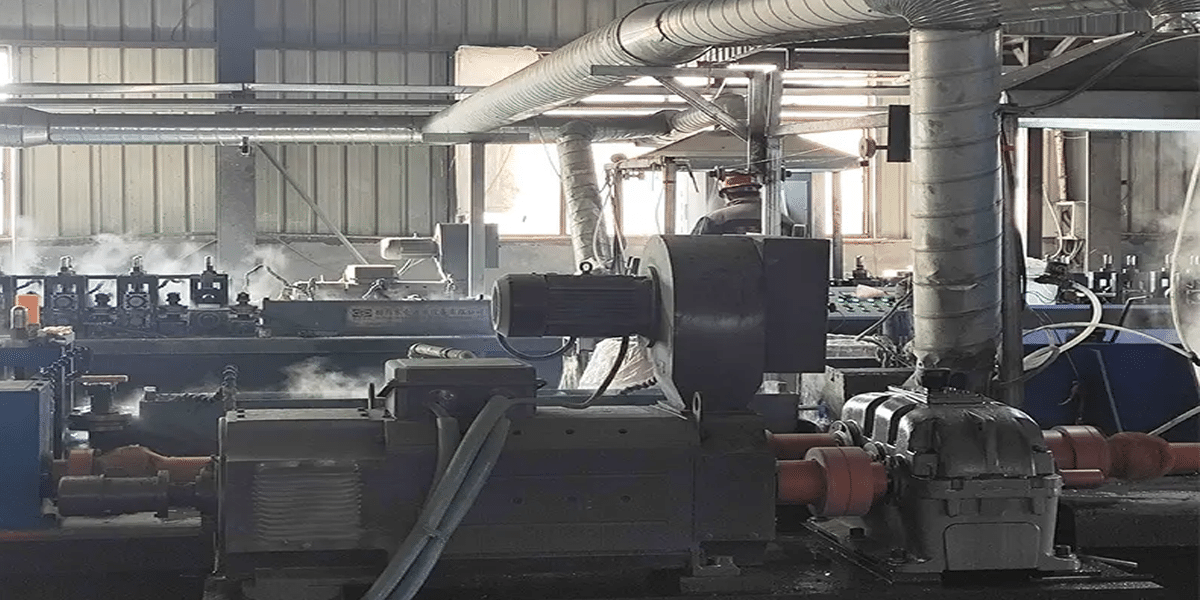
Comparison of ASTM A500 Steel Pipes with Other Structural Steel Pipes
1. ASTM A500 Steel Pipe vs. ASTM A53 Steel Pipe
ASTM A53 steel pipes are primarily used for low-pressure fluid and gas transportation and offer good corrosion resistance, making them suitable for general structural use. In contrast, ASTM A500 steel pipes are more commonly used in structural engineering, especially in applications that require higher load-bearing capacity.
Strength: ASTM A500 steel pipes typically have higher strength, making them suitable for structural applications that demand greater load-bearing capacity, while ASTM A53 steel pipes are more appropriate for low-pressure and low-strength applications.
Applications: ASTM A53 steel pipes are more commonly used in pipeline systems (such as water and gas pipes), whereas ASTM A500 steel pipes are widely used in building frames, bridges, and steel structures.
Weldability: Both steel pipes have similar weldability, but ASTM A500 steel pipes, due to their higher strength, are better suited for welded structures that bear complex stresses.
2. ASTM A500 Steel Pipe vs. API 5L Steel Pipe
API 5L steel pipes are primarily used in the oil and gas industry, specifically for high-pressure transportation pipelines. Compared to ASTM A500 steel pipes, API 5L steel pipes are designed with a focus on corrosion resistance and high-pressure transport capabilities.
Corrosion Resistance: API 5L steel pipes offer superior corrosion resistance and wear resistance, particularly in the transportation of corrosive fluids like oil and gas, while ASTM A500 steel pipes focus more on structural performance in load-bearing applications.
Strength and Applications: While ASTM A500 steel pipes are used for structural applications in construction and industrial projects, API 5L steel pipes are designed for specialized applications in oil, gas, and other fluid transport systems.
3. ASTM A500 Steel Pipe vs. EN 10219 Steel Pipe
EN 10219 is a European standard for cold-formed welded steel pipes, commonly used in construction and structural applications. Compared to ASTM A500 steel pipes, EN 10219 steel pipes have stricter strength and corrosion resistance requirements, especially for outdoor applications.
Strength: EN 10219 steel pipes generally have higher strength requirements, making them more suitable for long-term exposure in harsh environments, while ASTM A500 steel pipes are more focused on providing strong support in building and industrial structures.
Corrosion Resistance: EN 10219 steel pipes usually have higher corrosion resistance standards, making them ideal for long-term.
Applications of ASTM A500 Steel Pipe in the Machinery Manufacturing Industry
ASTM A500 steel pipes, known for their excellent strength and workability, are widely used in the machinery manufacturing industry. Here are some typical examples of their applications:
1. Mechanical Frame Structures
ASTM A500 steel pipes are commonly used in the framework of machinery, such as industrial machines, conveyors, and heavy equipment. These pipes can bear heavy loads and provide stability to the structure, ensuring the long service life of the machinery.
Example: In automated production lines, the framework for robots and conveyors often uses ASTM A500 steel pipes. These pipes have high load-bearing capacity and ensure the stability and safety of the entire system.
2. Support Structures and Columns
Many mechanical devices require high-strength and bending-resistant support structures and columns. ASTM A500 steel pipes are widely used for these support components due to their high tensile strength and compression resistance.
Example: Support columns and welding frames for machine tools, as well as support systems for large machinery, are typically made from ASTM A500 steel pipes to ensure the strength and stability of the equipment.
3. Transmission Shafts and Systems
In some high-strength mechanical transmission systems, ASTM A500 steel pipes can be used for transmission shafts and other critical parts. Their strength and toughness allow them to remain stable in high-load, high-speed environments.
Example: In heavy-duty machinery transmission systems, ASTM A500 steel pipes can be processed into precision shafts to transmit power and maintain mechanical efficiency.
4. Mechanical Components
ASTM A500 steel pipes are also used as raw materials for various mechanical components, such as couplings, brackets, and gearboxes. These pipes can be cut, welded, and processed into different shapes based on the needs of the application.
Example: In large mining machinery, ASTM A500 steel pipes are used for parts like gearboxes and brackets, which must withstand high-impact forces and vibrations.
5. Agricultural Machinery Structures
In agricultural production, many machinery components require sturdy structures to withstand heavy loads and long-term usage. ASTM A500 steel pipes, with their excellent strength and toughness, are commonly used in the frames and support structures of agricultural machinery such as tractors, harvesters, and seeders.
Example: In large agricultural machinery, the frames and supports are often made from ASTM A500 steel pipes, providing strong load-bearing capacity to ensure the stability and durability of the equipment.
How to Choose the Right ASTM A500 Steel Pipe Specification?
1. Pipe Size
The first step is to select the right pipe size based on the specific needs of the project. ASTM A500 steel pipes come in various outer diameters (OD) and wall thicknesses (WT). Choosing the correct size ensures the pipe can handle the required loads and pressures.
Outer Diameter (OD): Choose the appropriate outer diameter based on the pressure, flow rate, or mechanical load the pipe needs to carry.
Wall Thickness (WT): Thicker walls are generally used to handle higher pressure or loads, especially in high-strength applications.
2. Steel Pipe Grade
ASTM A500 steel pipes typically come in two grades: Grade A and Grade B. The right grade depends on the application requirements:
Grade A: Suitable for general structural applications where strength requirements are moderate.
Grade B: Used in applications where higher strength and pressure resistance are required, typically in more demanding structural settings.
3. Purpose and Application
When choosing the pipe specification, it’s important to consider its specific use and operating environment. Different applications have different requirements:
Load-bearing Structures: For pipes used in supporting structures or heavy-load applications, select a specification with higher strength and thicker walls.
Fluid Transport: For pipes used to transport liquids or gases, consider the flow rate, pressure, and corrosion resistance, and select the appropriate diameter and wall thickness.
Corrosion Resistance Requirements: For pipelines exposed to harsh environments, you may need to choose pipes with corrosion-resistant coatings or made from special alloys.
4. Operating Environment
The working environment of the steel pipe is crucial in determining the right specification. Consider factors like temperature, humidity, and chemical corrosion when selecting the pipe material and finish:
High or Low-Temperature Environments: Choose pipes with good thermal stability for high or low-temperature applications.
Chemical Corrosive Environments: For corrosive environments, consider pipes with special coatings or made from corrosion-resistant materials.
5. Standard Requirements and Regulations
Choosing the right pipe specification must also comply with industry standards and regulations. For certain industries like construction, oil, and gas, specific industry norms and quality standards may need to be met.
API, ASTM, ISO Standards: Ensure the selected pipe meets the required standards to guarantee quality and safety.
6. Budget and Cost
The budget is also an important factor when choosing the right pipe specification. Larger or more specialized pipes are typically more expensive, but they can provide better performance and safety in high-demand applications.
7. Supplier and Availability
When selecting the steel pipe, also consider the supplier and delivery timelines. Ensure that the supplier can provide the required specifications on time and offer quality after-sales support.
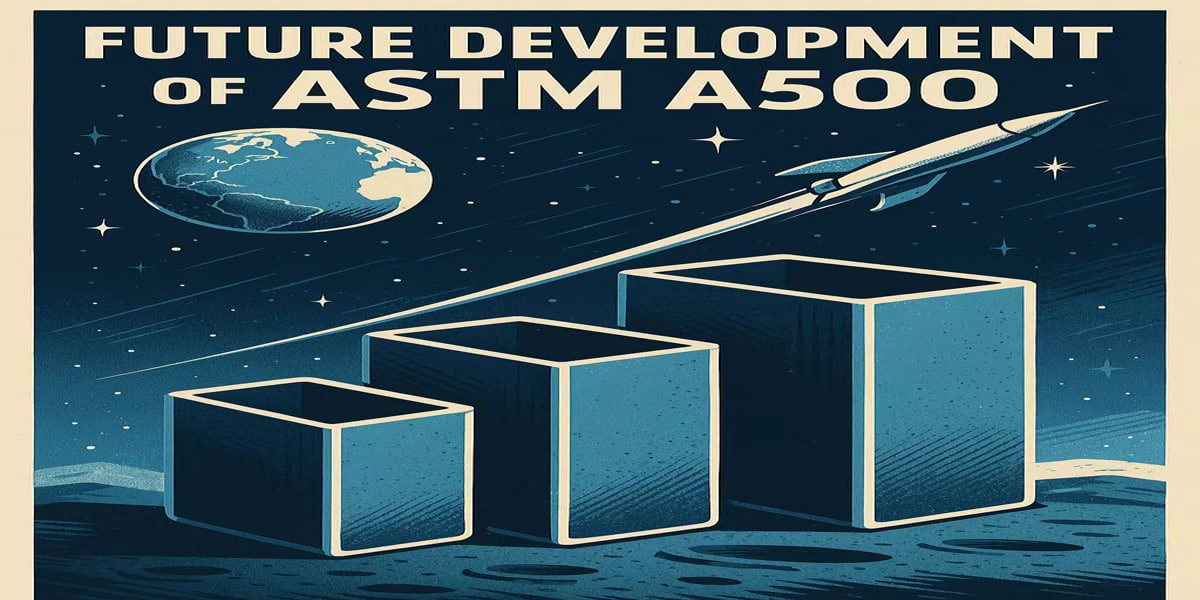
ASTM A500 Steel Pipe in the Machinery Manufacturing Industry: Future Development Trends
1. Increased Demand for High-Strength Steel Pipes
As machinery manufacturing continues to evolve, there will be an increasing demand for ASTM A500 steel pipes with higher strength and durability. This trend is driven by the growing need for more robust machinery components that can withstand higher loads and extreme conditions.
Future Impact: The demand for Grade B pipes, which offer higher tensile strength, will likely increase as machinery components require enhanced load-bearing capacities. This will lead to the development of stronger and more resilient steel pipes, meeting the rigorous demands of heavy-duty machinery applications.
2. Sustainability and Eco-Friendly Manufacturing
The machinery manufacturing industry is increasingly focusing on sustainability, with greater emphasis on environmentally friendly materials and processes. ASTM A500 steel pipes will likely see innovations in recycling, reduced environmental impact during production, and use in sustainable applications.
Future Impact: The production of ASTM A500 steel pipes will evolve with a focus on reducing carbon emissions and incorporating recycled steel. This shift will align with global trends towards more sustainable manufacturing practices and reduce the environmental footprint of steel production.
3. Advances in Welding and Fabrication Technology
As manufacturing processes become more sophisticated, advances in welding and fabrication techniques will continue to improve the performance and precision of ASTM A500 steel pipes. New welding technologies, such as laser welding or friction stir welding, could enable more efficient and precise manufacturing of steel pipes.
Future Impact: These innovations will allow for more complex and customized steel pipe structures, enabling machinery manufacturers to design components with better performance and lower material waste.
4. Customization and Specialized Applications
With the increasing demand for more specialized machinery, ASTM A500 steel pipes will likely be tailored to meet the unique needs of various industries, including robotics, automation, and medical machinery manufacturing. Custom pipe specifications will become more common, as manufacturers require components that can meet specific performance and design requirements.
Future Impact: Manufacturers will invest in developing highly customized ASTM A500 steel pipe solutions that cater to niche markets, such as precision equipment for medical devices or specialized machinery in the automotive sector.
5. Globalization and Supply Chain Optimization
As the machinery manufacturing industry becomes increasingly globalized, ASTM A500 steel pipes will be required to meet international standards and be available in various markets worldwide. This globalization will drive manufacturers to optimize their supply chains for quicker and more efficient distribution.
Future Impact: Manufacturers will prioritize improving the logistics and availability of ASTM A500 steel pipes to meet global demand, leading to better supply chain management, reduced lead times, and more cost-effective production processes.
As the demand for advanced machinery components continues to rise, ASTM A500 steel pipes will play a crucial role in meeting the evolving needs of the industry. With a focus on strength, sustainability, and precision, the future of these steel pipes is set to bring exciting opportunities for innovation in machinery manufacturing! At LONGMA Steel Pipe Manufacturing, we are committed to providing high-quality ASTM A500 steel pipes that cater to the diverse needs of the machinery manufacturing sector. Whether you’re involved in heavy-duty machinery production, robotics, or specialized applications, our expertise in steel pipe manufacturing can support your project with precision-engineered solutions!

